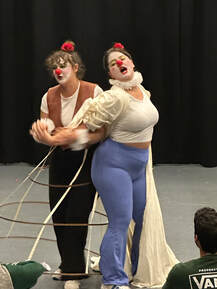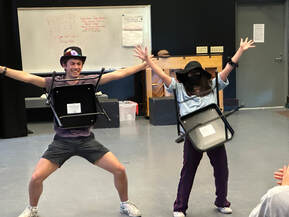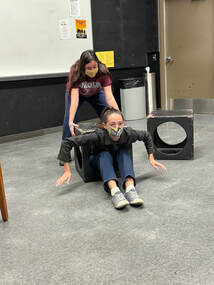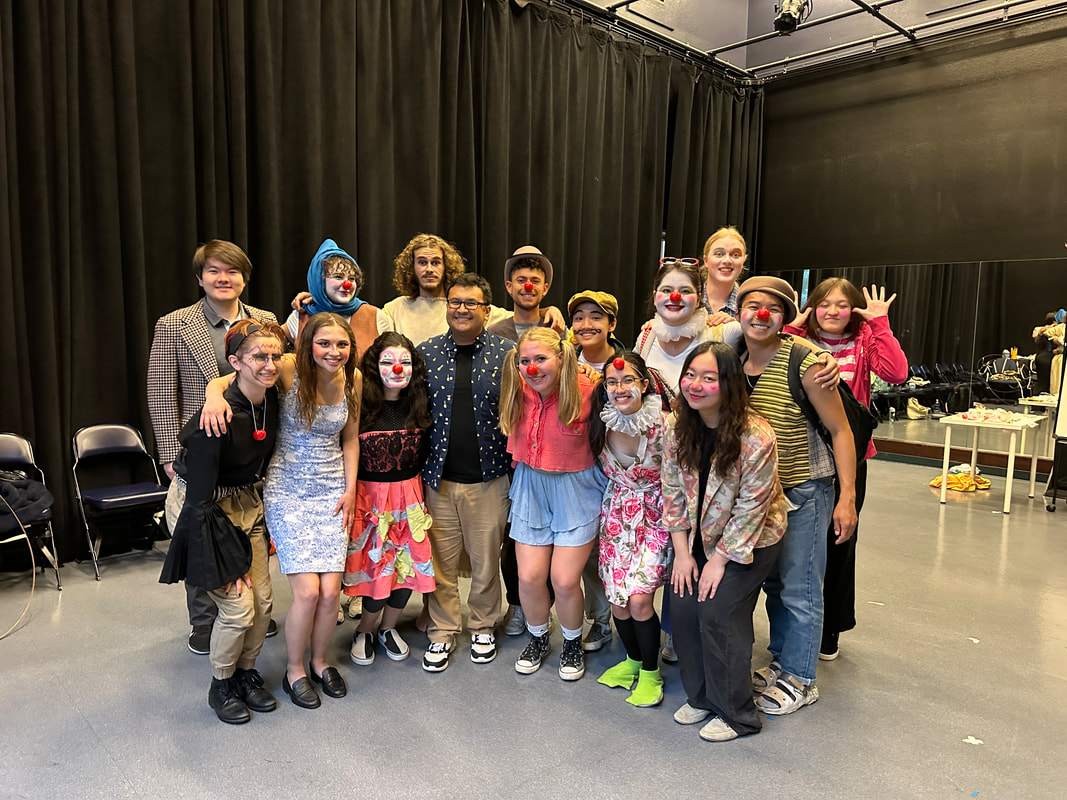Check out this article on Clowning written by one of my amazing students!
On Comedy
“Tell it in action”
– Buster Keaton
“Tell it in action”
– Buster Keaton
Comedy is a serious art form, demanding precision and timing. How serious? Well, it's a matter of life or death. If you fail, you've 'bombed' and 'died out there,' but if you succeed, you've 'killed!'
Embarking on the journey to master the art of Comedy is like stepping into a thrilling adventure. At its heart lies the art of the Lazzi, a physical or verbal bit derived from Commedia dell'arte. Its requirements are not for the faint-hearted, demanding precision, timing, improvisation, physicality, non-verbal communication, awareness, and imagination, among others. A Lazzi, at its core, is a delightful surprise, with a set-up and a punchline, a premise and a point of view, or an expectation and then a twist. It can stretch from a brief moment to hours, and its magic can be witnessed and harnessed in a myriad of comedic forms, from Classical Comedy; Aristophanes, Shakespeare, Moliere, to Clowning; Cirque du Soleil, Ringling Brothers, Hermanos Vasquez, to Stand Up, to Contemporary Comedy on stage and screen.
I teach Comedy by first exploring Commedia Lazzo (laughing lazzi, fly lazzi, hungry lazzi, tight-rope lazzi), then applying those principles mentioned above (timing, improvisation, precision, etc.) to scenes from classical Comedy, to clowning routines, to stand-up, to contemporary scripts. This approach allows you to adapt and excel in various comedic forms, empowering you with a versatile skillset.
Embarking on the journey to master the art of Comedy is like stepping into a thrilling adventure. At its heart lies the art of the Lazzi, a physical or verbal bit derived from Commedia dell'arte. Its requirements are not for the faint-hearted, demanding precision, timing, improvisation, physicality, non-verbal communication, awareness, and imagination, among others. A Lazzi, at its core, is a delightful surprise, with a set-up and a punchline, a premise and a point of view, or an expectation and then a twist. It can stretch from a brief moment to hours, and its magic can be witnessed and harnessed in a myriad of comedic forms, from Classical Comedy; Aristophanes, Shakespeare, Moliere, to Clowning; Cirque du Soleil, Ringling Brothers, Hermanos Vasquez, to Stand Up, to Contemporary Comedy on stage and screen.
I teach Comedy by first exploring Commedia Lazzo (laughing lazzi, fly lazzi, hungry lazzi, tight-rope lazzi), then applying those principles mentioned above (timing, improvisation, precision, etc.) to scenes from classical Comedy, to clowning routines, to stand-up, to contemporary scripts. This approach allows you to adapt and excel in various comedic forms, empowering you with a versatile skillset.




